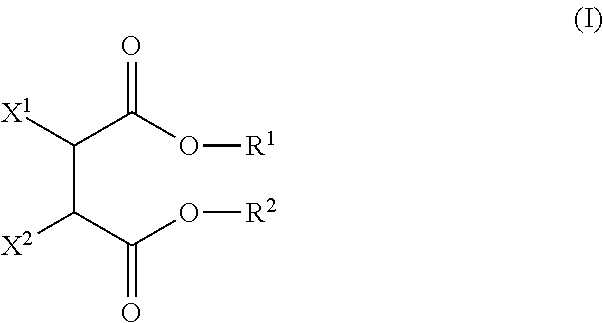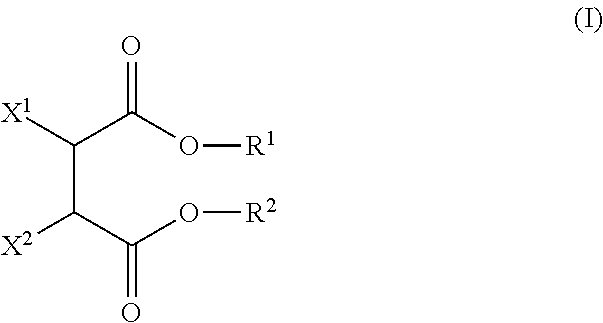Magnetic recording medium and method of manufacturing the same
- Summary
- Abstract
- Description
- Claims
- Application Information
AI Technical Summary
Benefits of technology
Problems solved by technology
Method used
Image
Examples
examples
[0111]The present invention will be described in detail below based on examples. However, the present invention is not limited to the examples. The terms “parts” and “percent” given in Examples are weight parts and weight percent unless specifically stated otherwise.
examples 1 to 7
, Comparative Examples 2 to 8
[0112]1. Preparation of Base Liquids 1 to 5
[0113]After adding 300 parts of water to 100 parts of barium ferrite magnetic particles, base liquids 1 to 4 were adjusted to the pH levels indicated in Table 1 with a 30 percent acetic acid aqueous solution and base liquid 5 with a 30 percent ammonia aqueous solution. Subsequently, at room temperature (about 25° C.), aqueous solutions containing the magnetic particles were dispersed in a sand mill (dispersion period: see Table 1) to prepare base liquids 1 to 5.
[0114]2. Measurement of Isoelectric Point and Average Primary Particle Size of Starting Material Magnetic Particles
[0115]The barium ferrite magnetic particles employed in base liquids 1 to 5 were collected from a single lot. Thus, they had an identical average primary particle size and isoelectric point. Accordingly, samples of particles for use in measuring the isoelectric point and average primary particle size were collected from the lot. The sample pa...
PUM
 Login to View More
Login to View More Abstract
Description
Claims
Application Information
 Login to View More
Login to View More - R&D
- Intellectual Property
- Life Sciences
- Materials
- Tech Scout
- Unparalleled Data Quality
- Higher Quality Content
- 60% Fewer Hallucinations
Browse by: Latest US Patents, China's latest patents, Technical Efficacy Thesaurus, Application Domain, Technology Topic, Popular Technical Reports.
© 2025 PatSnap. All rights reserved.Legal|Privacy policy|Modern Slavery Act Transparency Statement|Sitemap|About US| Contact US: help@patsnap.com



